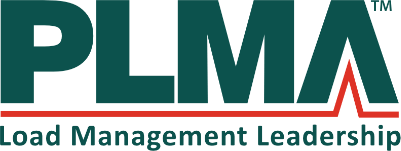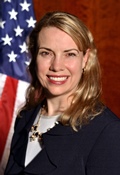36th PLMA Conference Agenda
Nov. 13-15, 2017 in Cambridge, Mass.

 
Monday, November 13, 2017
Optional Concurrent Pre-Conference Events (registration required) |
|---|
PLMA Demand Response Training Course
Evolution of Demand Response: Fundamentals and Path Forward
9:30 am - 4:00 pm Eastern |
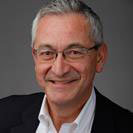
Co-Chair Mark Martinez, Southern California Edison |
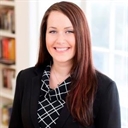
Co-Chair Christine Riker, Energy Solutions |
This one-day course explains how today’s demand response initiatives are evolving to interact with an emerging future with distributed energy resources for peak load management and much more. The course content expands on a white paper at www.peakload.org/DefiningEvolutionDR.
Learn more about the DR Training Series
|
| PLMA Interest Group Meetings |
| 8:00 am |
Shared Interest Group Breakfast
|
| |
Behind-the-Meter Storage Meeting
|
Women in Demand Management Meeting
|
| |
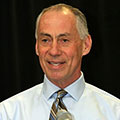
Co-Chair Gary Connett, Great River Energy |
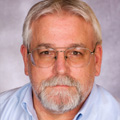
Co-Chair Steve Koep, Vaughn Thermal Corp. |
The Expanding Role of BTMS and DER Integration
| 9:00 am |
BTMS and DER Integration Interest Groups: It’s Merger Time! Beneficial Electrification Interest Group: The Right Time?
Gary Connett, Great River Energy; Steve Koep, Vaughn Thermal Corp.; Rich Barone, Hawaiian Electric Co.; John Powers, Extensible Energy
|
| 10:00 am |
The Grid-Enabled Product Category Comes to Fruition! Every Electric Water Heater Should Be Grid-Connected!
Moderator Steve Koep, Vaughn, Co-Chair PLMA Behind-the-Meter Storage (BTMS) Interest Group; Co-Chair The Community Storage Initiative
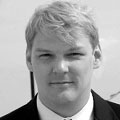
Keith Dennis, NRECA
The Formalization of the Grid-Enabled Product Category |

Paul Steffes, Steffes Corp.
The Path to Grid-Interactive Water Heating (GIWH), Opportunities & Challenges |
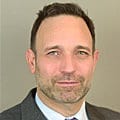
Rich Barone, Hawaiian Electric Co.
A GIWH Postcard From Hawaii |
|
| 10:50 am |
Morning Wrap Up! Next Steps?
|
See expanded agenda details at www.peakload.org/der-integration
|
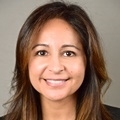
Co-Chair Melissa Knous, Duke Energy |
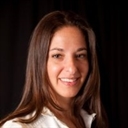
Co-Chair Erika Diamond, EnergyHub |
Join your Interest Group Co-Chairs and a panel of experts as we delve into the unique career paths of our members, get updates on Women in DM activities and plan for the year ahead.
| 9:00 am |
Industry and Career Deep Dive
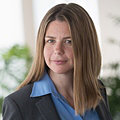
Sarah McAuley, Enernoc |

Ruth Kiselewich, ICF |
Sarah with other seasoned professionals will discuss their career paths and how they came to their current professional positions, where they see the industry going, and the opportunities they see for both companies and employees, followed by a question and answer session. This session is not for women only, but anyone interested in advancing their career in energy management.
|
| 10:00 am |
Mentorship Program Update
Learn about the progress of the Women in DM Mentoring Program, and meet some of the mentors and mentees selected for the pilot.
|
| 10:30 am |
Yearly Planning Session
We want to hear from you! Come with any thoughts, feedback and/or ideas for how we can shape Women in DM for the future.
|
Learn more about the Women in DM interest group
|
| 11:00 am |
Shared Interest Group Lunch
|
| |
DER Integration Meeting
|
Customer Engagement Meeting
|
| |

Co-Chair Rich Barone, Hawaiian Electric Company |

Co-Chair John Powers, Extensible Energy |
The DER Integration Interest Group addresses key economic, engineering, and customer program design aspects of Distributed Energy Resource Integration, including:
- Valuation of load management resources in “firming” non-dispatchable renewable resources
- Program design and re-design issues for adapting DR programs from peak-shaving to DER integration programs
- Technology needs assessments for DER applications
The DER Integration Interest Group intends to draw upon the experience of multiple utilities with high or increasing renewables penetration as well as from organizations moving into DR from solar and wind markets.
| 12 noon |
Session Introduction
John Powers, Extensible Energy
This intro session will also summarize the rationale for the merger of the Behind-the-Meter Storage interest group with the DER Integration interest group.
|
| 12:05 pm |
Dispatches: Stories from the Grid’s Edge
Moderator Rich Barone, Hawaiian Electric Co.
Market-leading DER luminaries discuss the real-world opportunities and challenges in aggregating fleets of distributed resources. Topics will include:
- Fundamental capabilities of distributed storage
- Business models
- Technical challenges
- Market and regulatory conditions
- Customer engagement
- Current Utility DER Programs/opportunities
Panelists:
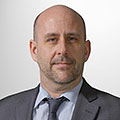
Dave Hebert, Demand Energy |

Mark Triplett, Green Charge Networks |

Audrey Lee, Sunrun |
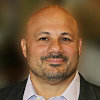
John Bellacicco, Stem |
|
| 12:55 pm |
Valuing Solar Plus Storage Options — Lessons from the Community Solar Value Project
John Powers, Extensible Energy
The Community Solar Value Project (CSVP), co-funded by the DOE SunShot Initiative, is a pioneering DER Integration project featuring participation by ten Western utilities. Over the past three years, the CSVP Team has worked with thought leaders in utilities, NREL, the DOE, and leading consulting firms to develop tools and techniques for advancing "solar-plus" options through the real-world laboratory of community solar projects. This presentation will summarize the key lessons for program designers learned from the CSVP in the key areas of estimating the value of combined solar-plus-DR-plus-storage options (the "solar triple play"), and translating that value into viable program pricing for customers. This presentation includes three scenarios from the Western US (Northern California, Rocky Mountain, Desert Southwest), drawing information from the multiple utilities participating in the CSVP. Pricing approaches from IOUs, Coops, and Municipal utilities will be discussed.
|
| 1:20 pm |

Greg Wikler, Navigant |
Puget Sound Energy Case Study
Puget Sound Energy (PSE) conducted a DR potential assessment for its service territory to estimate how much DR was available to help address forecasted winter peak capacity shortfalls. The study was part of a broader DER potential study which included energy efficiency, customer sited generation, and storage. The DR potential assessment followed a detailed bottom-up methodology for market segmentation and characterization of end-use loads to estimate DR potential. In addition to winter peak load reduction, the study also estimated summer DR potential. The study further differentiated DR potential by event duration. PSE's customers were segmented by class (following PSE's rate codes), building type and end-uses. The study considered four customer classes (residential, small C&I, medium C&I, large C&I, extra-large C&I), ten building types (grocery, hospital, hotel, office, etc.), and eight end-uses (central furnaces, heat pumps, water heating, process, etc.) for potential characterization. Four different DR program types were characterized — Direct Load Control (DLC), C&I Curtailment (with firm capacity reduction commitment), Economic DR (voluntary energy reduction only), and Dynamic Pricing. The results from the study indicate 4 percent winter peak load reduction potential from a DR program portfolio. Space heating and electric water heating DLC have highest load reduction potential, followed by C&I Curtailment and Dynamic Pricing. Among the different commercial building types, office and retail have substantial share in the total potential. Study results establish Dynamic Pricing as the least cost option with significant share in total potential. Among the non-pricing options, Economic DR has lowest cost with relatively small share in the potential, followed by DLC and C&I Curtailment. PSE is in the process of incorporating the potential results into the Company's Integrated Resource Plan (IRP).
|
| 1:45 pm |
BTMS and DER Integration: Future Topics and Targets for the Merged Interest Group
Moderated by: Gary Connett, Steve Koep, Rich Barone, John Powers
|
Learn more about the DER Integration interest group
|
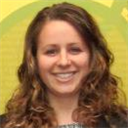
Co-Chair Meridith Nierenberg, Orange and Rockland Utilities |
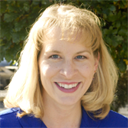
Co-Chair Andrea Simmonsen, Idaho Power Company |
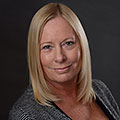
Co-Chair Sharyn Barata, Opinion Dynamics |
Five Top Trends in Utility Customer Engagement
Join your Interest Group Co-Chairs and a panel of experts as we dive into the top five customer engagement trends in our industry today.
| 12 noon |
Customer Engagement Interest Group Welcome by Co-Chairs
Andrea Simmonsen, Idaho Power, Meridith Nierenberg, Orange & Rockland Utilities, and Sharyn Barata, Opinion Dynamics
|
| 12:05 pm |

Moderator Krysti Shallenberger, Utility Dive |
Expert Panel: Top Five Trends for Utility Customer Engagement
Krysti Shallenberger, of Utility Dive will moderate a panel discussing the "5 Trends to Watch in Utility Customer Engagement". This article was published earlier this year. From smart thermostats to energy marketplaces, these are the trends shaping consumer engagement in the energy industry. Expert panelists will discuss the top five trends for utility customer engagement.
• Partnerships
• Knowing the Customer
• Connected Devices
• Big Data, and the
• Energy Marketplace
The panelists will speak for 45 minutes, followed by a 15 minute open discussion with all attendees.
Panelists:
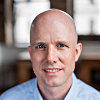
Chris Ashley, Energy Hub |
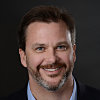
Judd Moritz, Simple Energy |
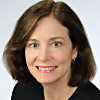
Patty Durand, Smart Energy Consumer Collaborative |
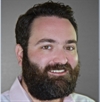
Lee Hamilton, Xcel Energy |
|
| 1:05 pm |
Breakout Sessions
Dive deeper into the trends you are most interested in during breakout sessions. In these interactive sessions, you will have the opportunity to participate in a small group discussion related to key trends in customer engagement. The breakout sessions will meet for 30 minutes, followed by a 15 minutes report out to share key takeaways. The following small group discussions will be facilitated:
- Best Practices for Engaging Customers through Energy Marketplaces Judd Moritz of Simple Energy will help facilitate the discussion.
- Enhancing the Customer Journey Patty Durand of Smart Energy Consumer Collaborative will help facilitate the discussion.
- How to Measure the Success of your Customer Engagement Strategies an Opinion Dynamics representative will help facilitate the discussion.
|
| 1:50 pm |
Wrap up and Introduction to 36th PLMA Conference
Presented by Customer Engagement Co-Chairs, Andrea, Meridith and Sharyn
|
Learn more about the Customer Engagement interest group
|
| 2:00 pm |
Refreshment Break
|
| |
Retail Pricing Roundtable
|
Thermostat Meeting
|
| 2:30 pm |

Co-Chair Clay Engel, Consumers Energy |
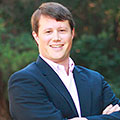
Co-Chair Evan Pittman, Itron |
Join the Retail Pricing Interest Group for an open discussion featuring practitioners from utilities, consultancies, and technology providers who are in the midst of deploying time-varying pricing programs for electric customers. In the face of growing DER proliferation and pressure to make efficient use of capital assets, many utilities are turning to innovative tariff designs to ensure adequate cost recovery and to incentivize efficient consumption and production decisions behind the meter. Don’t miss the opportunity to learn from your peers’ successes and challenges in this burgeoning area of interest.

Julia Lundin, Oracle |
Customer Motivators: Demonstrating the Value of Smart Meters with Peak Time Rewards
In this session, you will learn how National Grid is: Demonstrating the value of their smart meter rollout while simultaneously increasing customer satisfaction and engagement, providing monetary incentives to customers without altering their billing system, and empowering customers with tools and information to manage their own energy usage.

Sanem Sergici, The Brattle Group |
Retail Pricing Reform: What’s the Hold Up and How Can We Move It Forward?
In this session, Sanem will cover:
• A brief history of the tariff reform starting with the early TOU pilots in the late 70s, extending to pilots and programs with smart homes and transactive energy.
• Despite the long history of the innovative pricing, progress is happening at a snail’s pace. What are the barriers to the tariff reform?
• Ways to address some of these barriers and moving ahead with the tariff reform.
Learn more about the Retail Pricing interest group
|
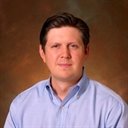
Co-Chair Justin Chamberlain, CPS Energy |
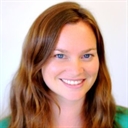
Co-Chair Olivia Patterson, Opinion Dynamics |
| 2:30 pm |
Welcome and Introductions
|
| 2:35 pm |

Kurt Roth, Fraunhofer USA |
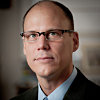
Peter Klint, Eversource |

Brenda Pike, National Grid |
Emerging Opportunities for Communicating Thermostats: Things Are Heating Up!
While communicating thermostats (CTs) have recently become mainstays of both residential demand response and energy efficiency programs, they have the potential to provide further value to utility programs. The Fraunhofer USA Center for Sustainable Energy Systems (CSE), Eversource, Holyoke Gas & Electric, and National Grid are collaborating on a DOE Building America project to develop and test algorithms that analyze CT data to remotely and accurately identify insulation, air sealing, and heating system retrofit opportunities. This can be used to generate customer-specific retrofit offers and savings estimates that are expected to significantly increase customer uptake. Furthermore, the algorithms could also enable remote performance assessment of retrofits to ensure that they perform as expected, providing rapid and home-specific assessment in contrast to typical evaluation practices. This presentation will describe lesson learned from ongoing efforts to realize these emerging value CT propositions, focusing on factors related to program integration.
|
| 3:15 pm |
The Future of BYOT: Conversation with the Authors of the PLMA Whitepaper

Alan Mellovitz, Accenture |
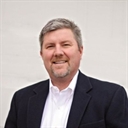
Jeff Norman, Autogrid |

Dain Nestel, CLEAResult |

Erika Diamond, EnergyHub |
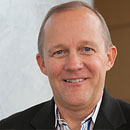
Brad Davids, Nest |

Lee Hamilton, Xcel Energy |
|
| 4:15 pm |
Thermostat Interest Group Meeting Check-in
|
Learn more about the Thermostat interest group
|
| 4:30 - 5:30 pm |
PLMA Interest Group Meetup
All are welcome to attend to network and learn how to make the most of the Conference activities.
|
|
6:00 - 8:00 pm
|
Board of Directors Meeting
|
| 8:00 - 10:00 pm |
Welcome Reception at The PLMA Rooftop Lounge, 14th Floor
Open to all conference registrants at no additional fee, compliments of PLMA.
|
Tuesday, November 14, 2017
Wi-Fi hosted by Itron; Electric Power Alley hosted by CLEAResult |
|---|
| 7:30 am |
Breakfast Buffet in Sponsor Lounge
|
| |
Morning General Session 1
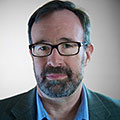
Co-Chair Richard Philip, Duke Energy |

Co-Chair Sharyn Barata, Opinion Dynamics |
|
| 8:30 am |

Richard Philip, Duke Energy and PLMA Chair |
Opening Remarks
|
| 8:40 am |
Welcoming Remarks: "Vision of New England" and Welcome to Boston
Commissioner Judith Judson, Massachusetts Department of Energy Resources
Judith Judson was appointed as Commissioner of the Department of Energy Resources in April 2015. Prior to joining the DOER, Judith worked at Customized Energy Solutions as Director of Emerging Technologies for the U.S. where she advised clients on the use of innovative technologies to cost-effectively modernize the US electric grid. Judith joined Customized Energy Solutions from Massachusetts-based clean energy technology company, Beacon Power LLC, where she served as Vice President of Asset Management and Market Development. As a nationally recognized expert on energy storage, Judith has participated in numerous hearings and technical conferences at the Federal Energy Regulatory Commission and the U.S. Department of Energy.
Commissioner Judson chairs the Massachusetts Energy Efficiency Advisory Council and represents Massachusetts on the Boards of the Regional Greenhouse Gas Initiative Inc.; and Massachusetts Clean Energy Center. Previously she served as Chairman and Commissioner of the Massachusetts Public Utilities Commission during the Romney Administration. She holds an M.B.A. from Harvard Business School and a Bachelor's degree in Mechanical Engineering from Kettering University.
|
| 9:00 am |
Northeast Regional Roundup of Customer-centric Programs
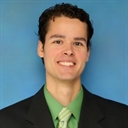
Paul Wassink, National Grid |
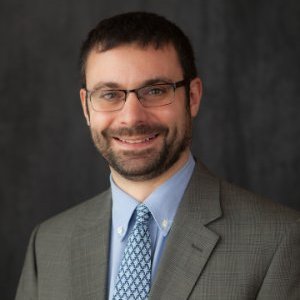
Michael Goldman, Eversource |
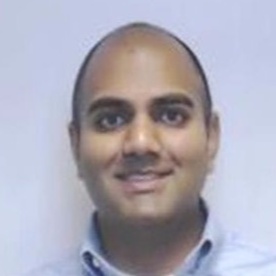
Aaron Mehta,
Con Edison |

Austin Brandt, Cape Light Compact |
Representatives from Eversource, National Grid, ConEdison, and the Cape Light Compact will talk about the unique challenges and opportunities for demand response in the northeast. They will cover their organizations' experience with demand response from program conception to execution, and how they plan to grow their programs. Learn about:
- Eversource's investigation into technology specific demand response, using a persona-based approach
- National Grid's experience with a Pay-For-Performance demand response model
- Cape Light Compact's exploration of demand response in a unique market
- Highlights from the Con Edison BQDM demand response auction
|
| 10:00 am |
Designing for Customer-centric Residential DLC DR Utility Programs

Joana M. Abreu, Fraunhofer CSE |

Kurt Roth, Fraunhofer CSE |

Brenda Pike, National Grid |
Learn how National Grid's ConnectedSolutions residential demand response program helps reduce market price spikes and increases grid reliability. Currently enabled by connected thermostats, National Grid plans to allow customers to enroll Wi-Fi enabled clothes washers, dryers, and water heaters in 2017. Gain insight on customer-centric recommendations for designing successful residential direct load control DR utility programs based on understanding customer attitudes, concerns, motivations for, and barriers to enrollment so that connected residential DR can rapidly scale to realize its full peak demand management potential.
|
| 10:30 am |
Refreshment Break in Sponsor Lounge
|
| |
Morning General Session 2

Co-Chair Wendy Brummer, Pacific Gas and Electric Company |
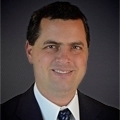
Co-Chair Brett Feldman, Navigant |
|
| 11:00 am |
Colorado Storage and Demand Response

Pablo Bauleo, Fort Collins Utilities |
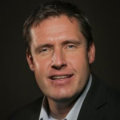
Chris Ash, Itron |
Succeeding with Distributed Energy Resources: Optimizing the Coordination of Demand Response, Solar, and Storage Assets
As utilities look to use a portfolio of distributed energy resources for improved grid management, more profitable energy trading and firming renewables, it's critical to understand how the resources work together to ensure a successful approach. For example, one approach may be to utilize storage to maintain ideal customer comfort during a demand response curtailment event. This session will provide a detailed look at the operating characteristics of demand response, solar and storage so attendees will understand how to develop a coordinated distributed energy resource strategy that provides maximum benefit to the utility and its customers. The session will also examine how the steps an electric utility is taking to incorporate distributed energy resources into its grid planning.

Andre Gouin, Xcel Energy |
Peña Station NEXT - Integrating Renewables and Battery Storage Within a Microgrid
This session will provide a detailed look at the operating characteristics of demand response, solar and storage, and help you understand how to develop a coordinated distributed energy resource strategy that provides maximum benefit to the utility and its customers. The session will also examine the steps Xcel Energy is taking to incorporate distributed energy resources into its grid planning. Peña Station NEXT is a mixed-use, smart city development in Denver, where multiple stakeholders-- public and private with a variety of motivations--have partnered on a solar+storage microgrid. The partners are Panasonic, Xcel Energy, Denver International Airport, and LC Fulenwider, a real estate developer. The project includes carport and rooftop solar PV, anchor load at Panasonic's Technology & Business Solutions Center, and a battery energy storage system.
|
| 11:30 am |
Electric Vehicles – The Blessing and The Curse
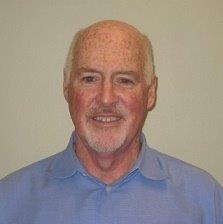
Bill Bottiggi, Braintree Electric Light Department |
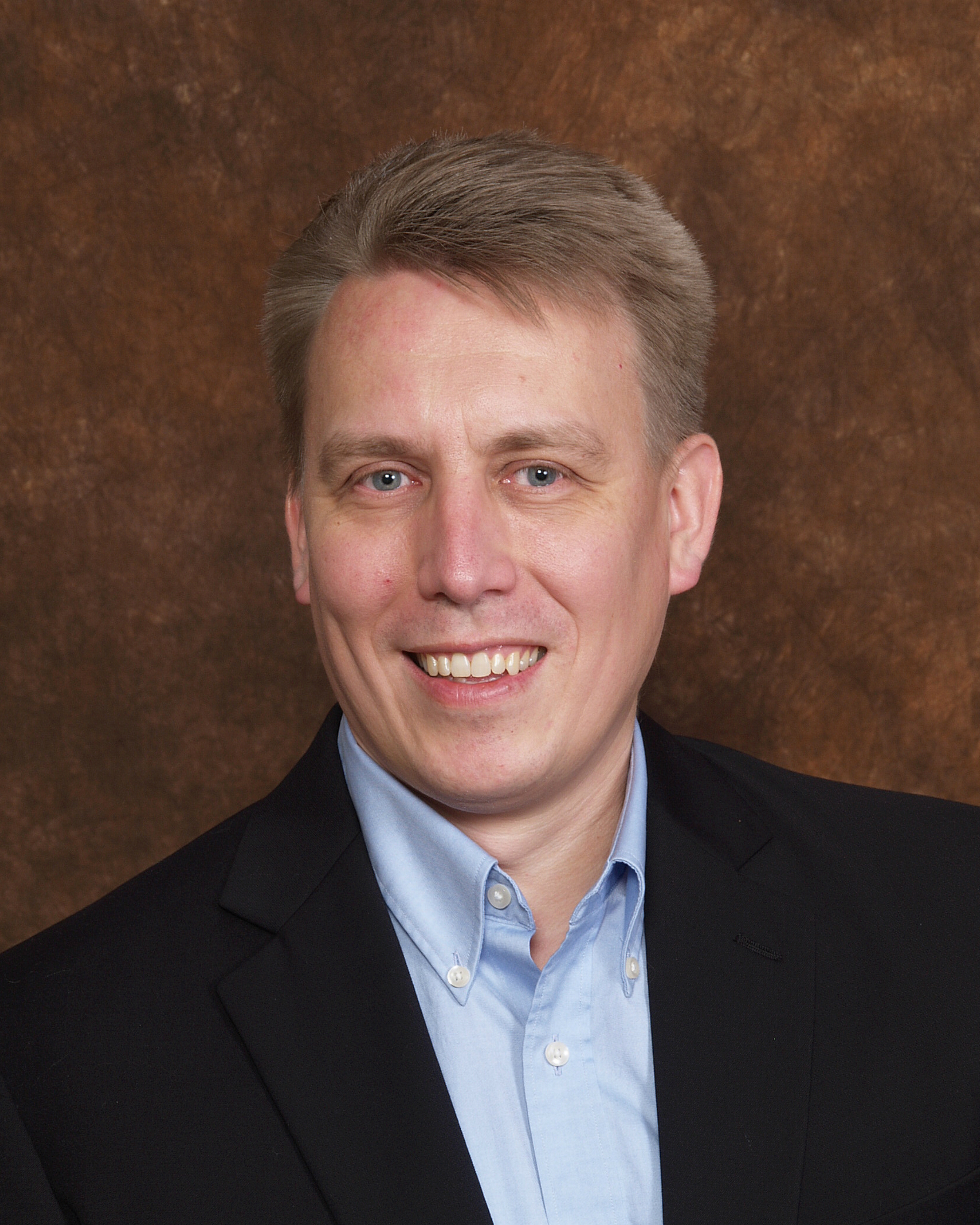
Pasi Miettinen, Sagewell |
Electric vehicles are the opportunity of the century for electric utilities – and the potential curse of the millennium. In Massachusetts alone, the state's goal of over 300,000 EVs on the road in the next seven years could add up to 1 GW of new load into the grid. This increase could wipe out the benefits of all load control programs to date. Come learn how about the "Braintree Drives Electric" campaign to market EVs to increase kWh sales – and how they deployed innovative hardware, behavioral and smart-meter-based strategies to minimize the peak load impacts.
|
| 12 noon |
Lunch Buffet in Sponsor Lounge hosted by Franklin Energy Group
|
| 1:30 pm |
Afternoon General Session 1

Co-Chair Mark Sclafani, Central Hudson Gas and Electric |
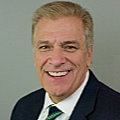
Co-Chair Dave Hyland, Schneider Electric |
|
| 1:30 pm |
ComEd IFTTT Enablement: Leveraging "If This Then That" Technology to Increase the Ease of Customer Engagement in Utility Demand Response and Dynamic Pricing Programs
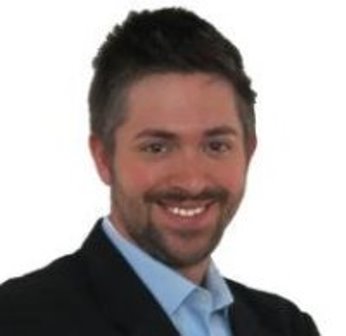
Brian Kirchman, ComEd |
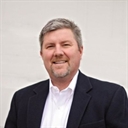
Alan Mellovitz, Accenture
|
ComEd will become one of the first utilities to enable the "If This Then That" (IFTTT) platform for demand response and dynamic pricing programs. Effective during the summer of 2017, more than 240,000 residential participants of ComEd's Demand Response and Dynamic Pricing programs will have the ability to customize how and when their connected home devices respond during peak pricing hours and demand response events. Integrating the IFTTT service with ComEd pricing programs not only offers customers a significantly more convenient experience, but it contributes to greater savings and participation during demand response events and peak pricing hours.
|
| 2:00 pm |
Non-Wires Alternatives: Lessons and Insights from the Front Lines
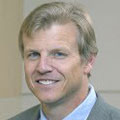
Moderator Erik Gilbert, Navigant |
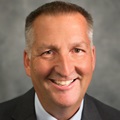
Mark Luoma, Consumers Energy |

Rich Barone, Hawaiian Electric Company |
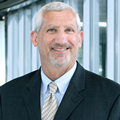
Steve Fine,
ICF |
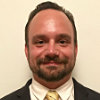
Michael DeAngelo, AVANGRID |
NWA managers from Consumers Energy, Hawaiian Electric (HECO), and AVANGRIDwill discuss and share their experience in planning and developing Non-Wires Alternative projects. Attendees will learn the different elements of the NWA project, including: planning the project, implementation lessons, cost-effectiveness, and challenges meeting the reliability and timing requirements needed by Distribution Planning and M&V enhancements were needed for NWA. Each of these areas will bring different insights that will be valuable for practitioners who are currently working on NWA projects, or who are likely to be in the near term. These insights will be important as the industry moves from DR to the broader set of DERs, which introduces many new issues and complexities to developing and managing these programs.
|
| 3:00 pm |
Refreshment Break in Sponsor Lounge
|
| |
Afternoon General Session 2

Co-Chair Meridith Nierenberg, Orange and Rockland Utilities |
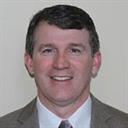
Co-Chair Brian Solsbee, Tennessee Municipal Electric Power Association |
|
| 3:30 pm |
Firm Load Dispatch: Keeping Customers Comfortable and Capturing Predictable Demand Response Value

Sam Sen,
TXU Energy |

Ben Hertz-Shargel, EnergyHub |
Traditional thermostat demand response suffers from two issues – 1) consumer perceptions of inconvenience and discomfort and 2) the inability to deliver firm, predictable load reduction. New computing technology, along with more granular data sets, has now made it possible to deliver firm reduction, elevating demand response from an emergency resource to a bankable one, like baseload generation. This new technology makes it possible to follow a population baseline, effectively targeting an arbitrary load shape in light of forecasted weather and other contextual factors. During the summer of 2016, TXU Energy tested one such technology with its iThermostat Program, which uses machine learning to develop thermal models of individual homes over time and uses those models during events to simulate energy consumption under various control and weather scenarios. The software performs fleet-wide optimization of demand response assets, calculating and dispatching the optimal reduction strategy while enabling control over the temperature impact to customers. In this session, we’ll share results from the 2016 trial as well as the 2017 DR season, including baseline-following performance and customer impact, and discuss the potential to further integrate machine learning into the control of thermostats and other Distributed Energy Resources (DERs).
|
| 4:00 pm |
Target Case Study: Opening New DR Opportunities with Automation

David Johnson, Target Corporation |
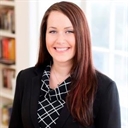
Christine Riker, Energy Solutions |
The demand response industry is evolving with a greater focus on automation to harness fast and flexible resources. In this transition, traditional DR customers can be left behind as the industry charges forward – unless they are proactive. Target Corporation is one of those proactive customers, including DR as a key factor in their commitment to social responsibility and sustainable operations. Target understands the importance of DR and the effect that it can have on its sustainability goals and bottom line. This case study will address the market capability for Automated Demand Response (ADR) through the lens of Target's participation in Pacific Gas and Electric Company's ADR equipment incentive program. Topics will include large retail participation best practices and lessons learned, specific project analytics such as cost, performance and load shed potential, OpenADR integration steps, and future DR opportunities enabled by ADR equipment.
|
| 4:30 pm |
Sponsor Showcase Lightning Round
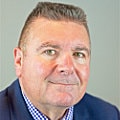
Co-Chair Paul Miles, PECO |
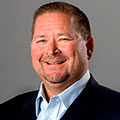
Co-Chair Ray Pustinger, AESC |
|
In this 30 minute session you will hear from several of our sponsors about the essence of their solutions. Our Co-chairs have vetted the presentations and helped the sponsors get their key messages compressed down to 3 minutes. This is not a marketing pitch, but a statement from the sponsors on specific examples of how they provide value.
Showcase Presenters:

Jeff Norman, AutoGrid |
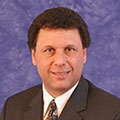
Mark Rupnik, BPL Global |
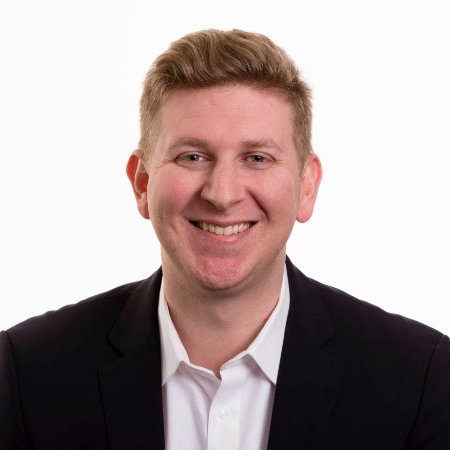
Philip Ciulla, CPower |
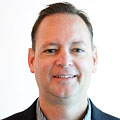
Peter Black,
Ecobee |

Christine Riker, Energy Solutions |
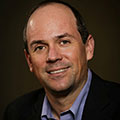
Jason Cigarran, Itron |

Jeff Gleeson, Nest |

Olivia Patterson, Opinion Dynamics |

Eric Martin, Tendril |
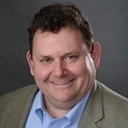
Dave Oberholzer, Whisker Labs |
|
|
| 5:00 pm |
Networking Reception in Sponsor Lounge hosted by Franklin Energy Group
A key value to PLMA events is the opportunity to network with conference participants. Join us for a cocktails and appetizers. Come and share what you learned and get additional details about your topics of interest.
|
| 7:00 - 9:00 pm |
"Cambridge Offpeak" Platinum Sponsor Party at Asgard Irish Pub
Asgard Irish Pub & Restaurant
350 Massachusetts Ave.
Cambridge, MA 02139
(617) 577-9100
Continue the conversation and interaction at our event party. We’ll provide food and an atmosphere where you can have more detailed conversations with your peers in the industry. Was their some topic that you wanted to explore in more depth? Did you want to contrast a topic with your experience? This is an opportunity to spend more time with your colleagues and increase your circle of friends.
Hosted by:

|
Wednesday, November 15, 2017
Wi-Fi hosted by Itron; Electric Power Alley hosted by CLEAResult |
|---|
| 7:30 am |
Breakfast Buffet in Sponsor Lounge
|
| |
Concurrent Breakout Sessions
Research Track 1

Co-Chair Paul Wassink, National Grid |
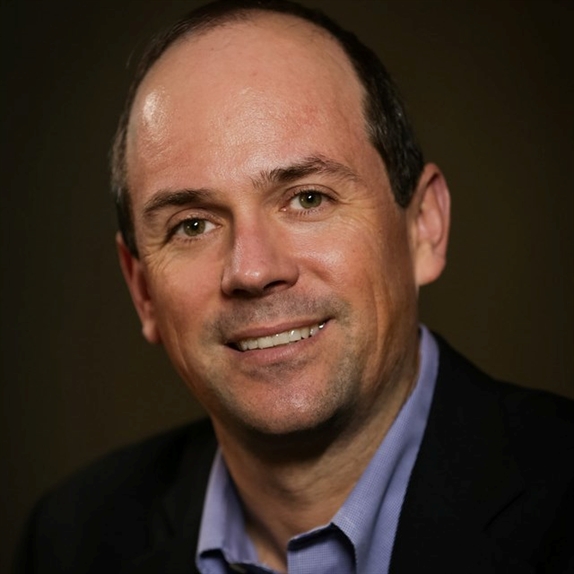
Co-Chair Jason Cigarran, Itron |
|
| 8:30 am |
Managed Electric Vehicle Charging: New Opportunities for Demand Response
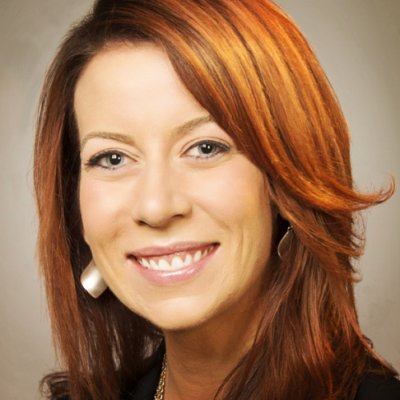
Marie Steele, NV Energy |
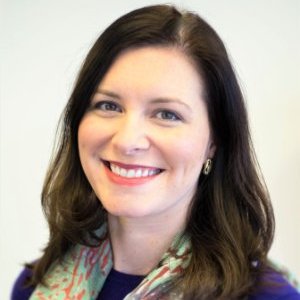
Erika Myers, SEPA |
Managed charging is the ability to modulate electric vehicle (EV) charging events, by either turning on, reducing, or even turning off customer charging events - essentially demand response. The presentation will include the current state of the managed charging industry, examples of utility managed charging activities across the country, and how EV load could be leveraged to increase benefits to the grid and customers. It will also highlight NV Energy's efforts to incorporate managed charging into its new program offerings.
|
| 9:00 am |
The Greatest Generation: The Greatest Energy Shifters. How Seniors Fare with TOU Rates

Jordan Folks, Research into Action |
Learn results from the California IOUs TOU rate study. Tens of thousands of California households were randomly assigned to either a time-of-use (TOU) rate or their standard rate and this study assessed whether TOU rates caused undue economic or health burdens for vulnerable populations. The presentation will focus on senior households: did TOU rates caused them undue economic or health burdens? Learn why senior households may be particularly good targets for TOU rates and why low-income households in certain climate zones may not be suitable for TOU.
|
| 9:30 am |
Utility Residential Customer Education Survey - Second National Survey of DR and EE Professionals
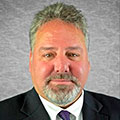
Ward Eames, NTC Corporate |
Discover preliminary results of NTC and UtilityDive's second survey on utility residential customer education. Session participants will compete to compare what they (think they) know about typical residential consumers' energy awareness and the incentives that compel them to participate in a DSM program versus proprietary research of students and adults in these areas. Using a fun game show format, the audience is divided into competing teams as the presenter focuses attention on key insights generated by the gaps between the participant responses and survey responses. Members of the winning team will all receive a prize.
|
|
Thermostat Track
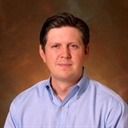
Co-Chair Justin Chamberlain, CPS Energy |

Co-Chair Ruth Kiselewich, ICF |
|
| 8:30 am |
Smart Thermostats: Next Frontier in Demand Response and Energy Efficiency

Marissa Hummon, Tendril |

Lee Hamilton, Xcel Energy |
Case study on implementation of a smart thermostat residential demand measure this summer that focused on identifying the best strategies and tools to enable the optimization of smart thermostats in energy efficiency and demand response in up to 1,000 homes this summer. Gain insight on how we recruited customers and worked with them to communicate what was happening, what tools and practices worked, our approach to increasing savings for both customers and utilities, and how we plan to apply our results in the future.
|
| 9:00 am |
Demand Side Management with Line Voltage Communicating Thermostats: A Real Life Experiment

Michaël Fournier, Hydro-Quebec |
Line voltage communicating thermostats (LVCT) – for baseboard heaters – have only recently come to market. Learn how 30 homes were retrofitted with 300 LVCTs to allow remote control for winter peak shaving during both morning and late afternoon demand response (DR) events. The presentation will include customers' feedbacks on comfort during DR events; reasons that could foster or hinder them participating in a DR program using similar technology; and satisfaction along with strategies where all or only certain rooms were controlled.
|
| 9:30 am |
Utility-Branded Marketplaces Can Supercharge BYO DR Programs!
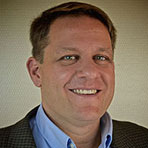
Brian Doyle, Xcel Energy |

Judd Moritz, Simple Energy |
The emergence of the utility-branded marketplace has transformed the customer experience by bundling smart thermostats (with instant rebates at the point of sale), DR enrollment, and hourly pricing into one simple, streamlined transaction. By offering a highly curated list of products, presenting offers to customers that are simple to understand, and with a streamlined purchase and enrollment process, learn how utilities are achieving significantly higher thermostat sales and DR enrollments while yielding extremely high customer satisfaction.
|
|
|
| 10:00 am |
Refreshment Break in Sponsor Lounge
|
| |
Research Track 2

Co-Chair Mark Martinez, Southern California Edison |
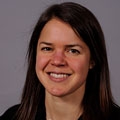
Co-Chair Robin Maslowski, Navigant |
|
| 10:30 am |
LBNL Research Roundup

Jennifer Potter, LBNL |

Peter Cappers, LBNL |

Christine Riker, Energy Solutions |

Craig Sherman, Sacramento Municipal Utility District |
Barriers and Opportunities to Broader Adoption of Integrated Demand Side Management
Gain insight from industry analysts, experts, and program administrators on findings of an industry survey and case studies of integrated demand side management pilots and programs implemented to date. The session highlights lessons learned and insights regarding overcoming barriers (regulatory, technical, market) and identifying benefits and opportunities for increased integration of DSM and DER efforts. LBNL is conducting several utility case studies that examine the utilities' journey and hopeful transition to providing IDSM portfolios.
|
| 11:00 am |
LBNL Research Roundup (cont.)
Demand Response Advanced Controls Cost Assessment: Estimating the Costs to Implement DR at Customer Premises
Demand response enabling technology is the mix of load control and communications hardware and software that make it possible to change the energy consumption patterns of end uses. This session will seek to inform industry stakeholders about the initial costs for the installation, communication platforms, telemetry, and control hardware for DR enabling technology and provide quantitative estimates. The session will discuss recent LBNL research that estimated these costs for each customer sector (i.e., residential, commercial, and industrial), by electricity consuming end-use and enabling technology for three types of bulk power system services: Shed, Shift, and Fast Response DR.
|
| 11:30 am |
Demand Response Potential from the Bulk Grid Perspective

Brady Stoll, National Renewable Energy Laboratory |
Gain insight from an exploration of the potential value of demand response (DR) in future power systems. Using hourly DR resource estimates by sub-sector, electrical end-use, and grid service, we incorporate virtual generator models of DR resources into large-scale production cost models, and analyze the grid-level impacts in terms of the ability of DR to reduce system costs and potentially help integrate renewables or reduce system emissions. Additionally, we examine the value of DR, its revenue, and how these change under different system conditions. In this panel session, we will describe our input data and modeling methods, provide an overview of the production cost models used, and summarize key results from analyses in Florida and the western United States. Findings include variations in DR value by end-use and geography, an ability to increase economic PV deployment potential in high penetration systems, and mixed emissions outcomes depending on system composition and fuel prices.
|
|
Pricing, Procurement, and Quality Assurance Track
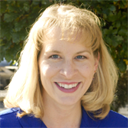
Co-Chair Andrea Simmonsen, Idaho Power Company |

Co-Chair Erika Diamond, EnergyHub |
|
| 10:30 am |
The Flex Pilot: PGE's Findings on Residential Pricing and Behavioral Demand Response
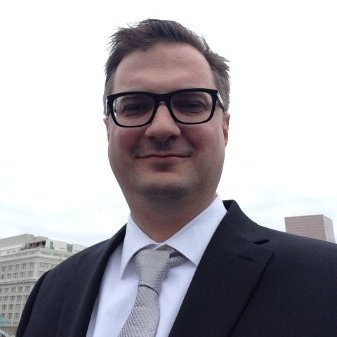
Roch Naleway, Portland General Electric |

Nick Bengston, CLEAResult |
PGE launched the Flex pilot in spring 2016 to test the effectiveness of time of use pricing (TOU), behavioral demand response (BDR), and peak time rebate (PTR) program options at reducing peak demand. This presentation will begin with an overview of the pilot research design, which includes 12 different program options and both opt-in and opt-out customer engagement approaches. The pilot's findings, in terms of recruitment efforts and customer performance, through the first 18 months of the pilot's implementation will also be discussed.
|
| 11:00 am |
Integrating Wholesale and Retail DR Programs: National Grid's New C&I DR Offering

Brett Feldman, Navigant |

Paul Wassink, National Grid |

Joe Gatto, CPower |
In late 2016, National Grid developed a new commercial and industrial (C&I) demand response (DR) program for the 2017 and 2018 summer seasons as part of its state-approved energy efficiency program plan. The utility wanted to ensure that it could extract the most benefit from the program without overlapping too much with the current ISO-NE DR program, and show that incremental DR participation could be gained through utility programs and incentives. National Grid will present some initial results and compare the program to other utility DR programs around the country, the program design and vendor procurement process, and cost/benefit streams relevant to those objectives.
|
| 11:30 am |
PG&E’s Automated Demand Response (ADR) Program: Streamlining Demand Response Project Procurement and Quality Assurance is the Next Big Thing

Jyoti Rao, Pacific Gas & Electric Company |

Ryan Bird, Energy Solutions |
Discover lessons learned from Pacific Gas & Electric’s (PG&E) Automated Demand Response (ADR) program, which is testing three new offers using streamlined procurement and integrated quality assurance: ADR’s SMB Pilot, ADR’s Manage Your Power, and ADR’s Residential Incentive. Each offer targets different customers that all struggle with the same challenge: lack of expertise and time to spend hours searching for the right technologies and qualified contractors to install and service projects. PG&E has learned that optimizing procurement is helping to solve this major hurdle for customers while increasing DR adoption and competing successfully in a growing market.
|
|
|
| 12 noon |
Lunch Buffet in Sponsor Lounge
|
| |
Closing General Session

Co-Chair Michael Brown, Berkshire Hathaway, NV Energy |
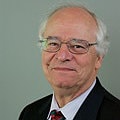
Co-Chair Joseph Childs, Eaton |
|
| 1:00 pm |
Evolving Variety – Differences in Residential Price-Response by Enabling Technology

Daniel Carr,
Alectra Utilities |
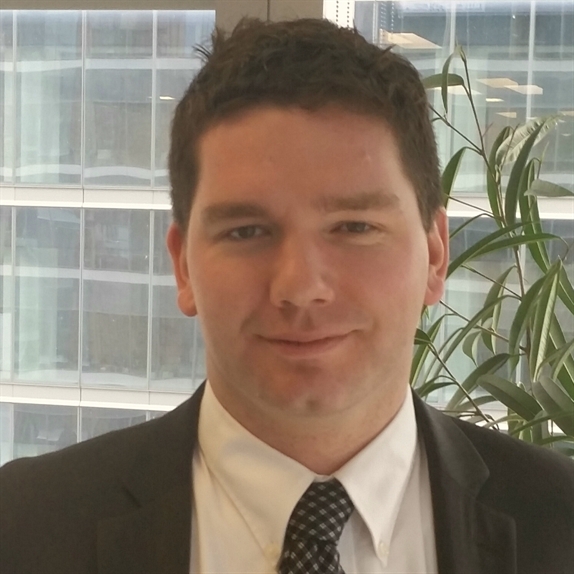
Peter Steele-Mosey, Navigant |
In November 2016, this same team presented to PLMA the results of the first summer of the Advantage Power Pricing program. This pilot is a technology-enabled variable peak pricing program modeled closely on OG&E's SmartHours program. In the first year, all participants were equipped with an Energate Foundation to enable them to respond to price fluctuations. Since that time, Alectra has recruited additional participants, some with their own smart thermostats (bring-your-own-device, BYOD), and some with legacy A/C switches with upgraded control systems to allow for variable and automated response to price signals. The latest evaluation (to be published summer 2017) estimated winter and summer impacts for all three groups. Key findings that will be presented include reduction results based on device, behavior, type of call (variable pricing, scheduled, unscheduled, and critical peak), and season. Learn which customers delivered the most substantial DR impacts.
|
| 1:30 pm |
Hawaii's Future Demand Response Portfolio in Action
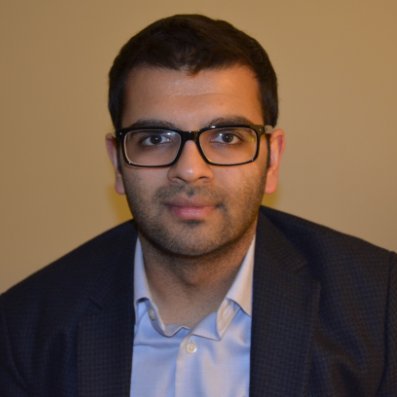
Dhruv Bhatnagar, Hawaiian Electric Company |
The Hawaiian Electric Companies are moving into new territory with a large expansion of their demand response (DR) portfolio to empower their customers with expanded energy options and economic opportunities, while building a more reliable and flexible electricity grid that enables the state to reach its goal of 100% renewable energy by 2045. The Companies intend to contract with third-party aggregators to deliver four grid services, including regulating reserve, fast frequency response, replacement reserve and capacity. As the first phase of this expansion, the Companies are working with five existing demand response (DR), photovoltaic (PV), and/or energy storage providers to implement demonstration projects that will deliver these key grid services to the Companies. The projects include grid service delivery from residential PV and energy storage installations, commercial energy storage installations, advanced thermostats, electric vehicle chargers, water heaters, HVAC and building controls. The purpose of these projects is to identify and mitigate potential technology, operational, customer engagement and market risks associated with the delivery of the grid services and provide these vendors an opportunity to display their offerings. This presentation will review and highlight the findings and status of the demonstration projects, including the technology, operational, and market risks faced and how they were overcome. In addition, the presentation will highlight the status of the Companies’ demand response portfolio and the efforts the Company is making to enable third-party participation in demand response on the islands. The results of these projects are not only valuable to Hawaii but to all other jurisdictions that envision an expansion of their DR offerings to provide grid services.
|
| 2:00 pm |
Welcome to 37th PLMA Conference in Coronado, California
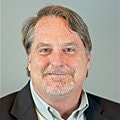
Brad Mantz, San Diego Gas and Electric |

Mark Martinez, Southern California Edison |
|
| 2:20 pm |
Closing Remarks and Adjourn

Michael Brown, Berkshire Hathaway, NV Energy and PLMA Vice Chair |
|
| 2:30 - 3:00 pm |
Ice Cream Social in Sponsor Lounge with Utility Load Management Exchange
|
Utility Load Management Exchange Activities
The Utility Load Management Exchange (formerly the Advanced Load Control Alliance) mission is to promote load control as a viable option for utility deployments in demand reduction, economic dispatch, and/or T&D reliability through a forum for utility staff members to share information on program design, marketing, vendor management, benefit-costs and technology deployments.
View the Detailed Agenda
Wednesday, November 15, 2017, 3:00 - 5:00 pm and
Thursday, November 16, 8:00 am - 4:00 pm
(Open to Utility Representatives Only, Registration Required) |
|---|
| Tuesday, November 14, 2017 |
| 7:30 - 8:30 am |
ULME Pre-Meeting Breakfast at PLMA
Grab you breakfast in the PLMA Sponsor Lounge, then join us for a quick meet and greet before the conference gets underway.
|
| Wednesday, November 15 |
| 3:00 - 5:00 pm |
Utility Load Management Exchange Fall 2017 Meeting |
| 6:00 - 8:00 pm |
Utility Load Management Exchange Fall 2017 Meeting Networking Dinner |
Thursday, November 16
|
| 8:00 am - 4:00 pm |
Utility Load Management Exchange Fall 2017 Meeting (includes breakfast and lunch) |
|

